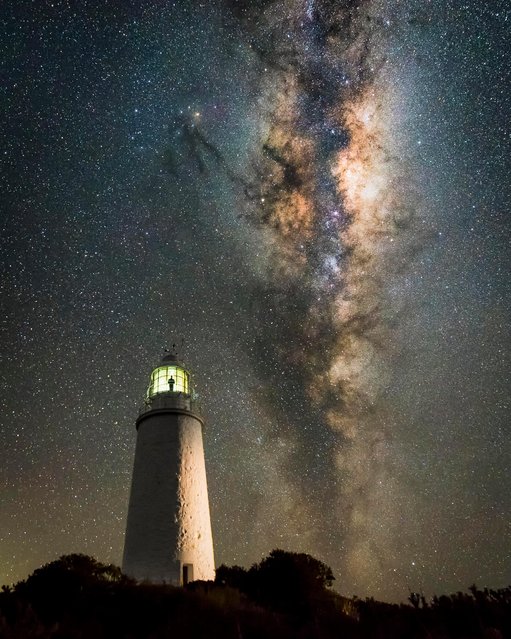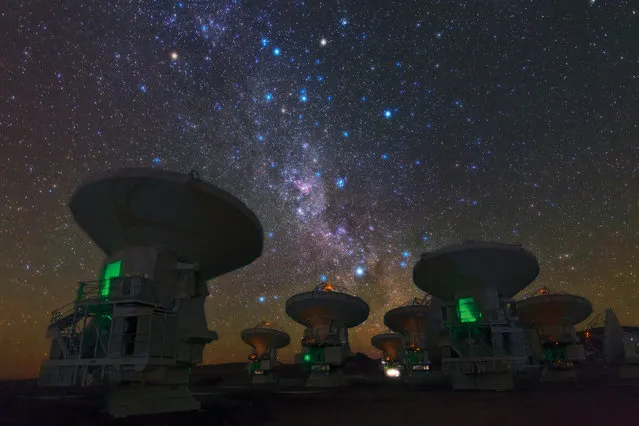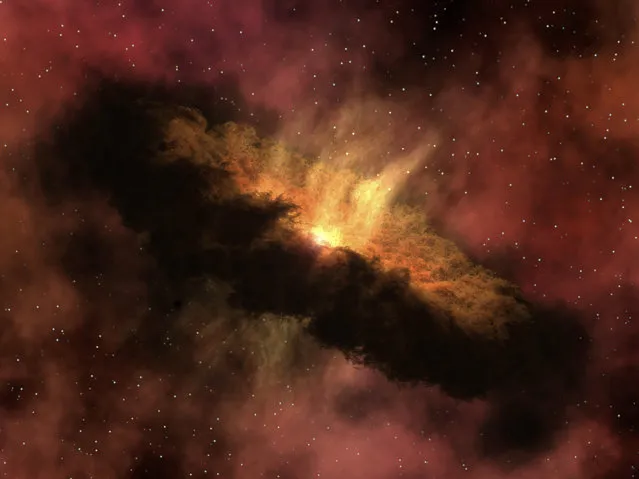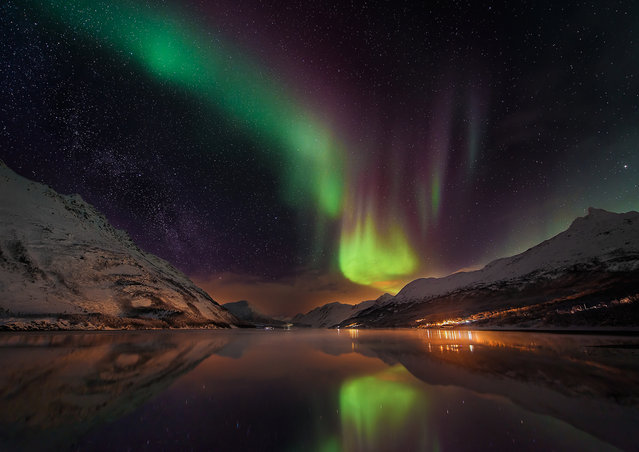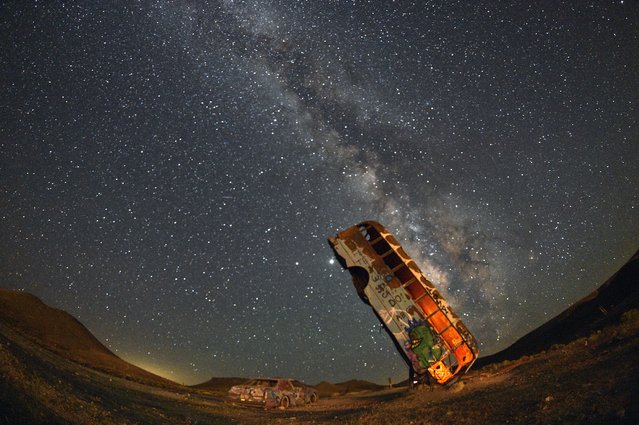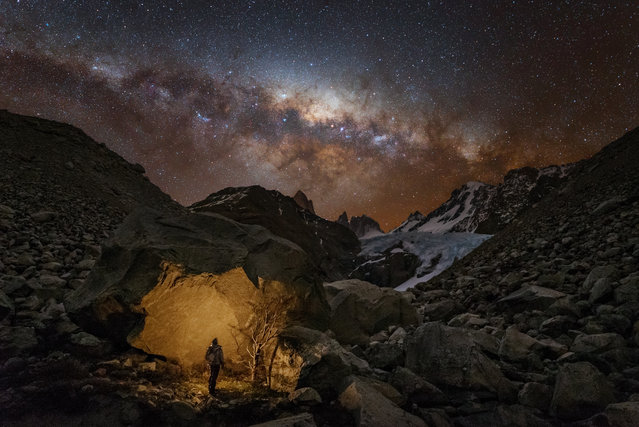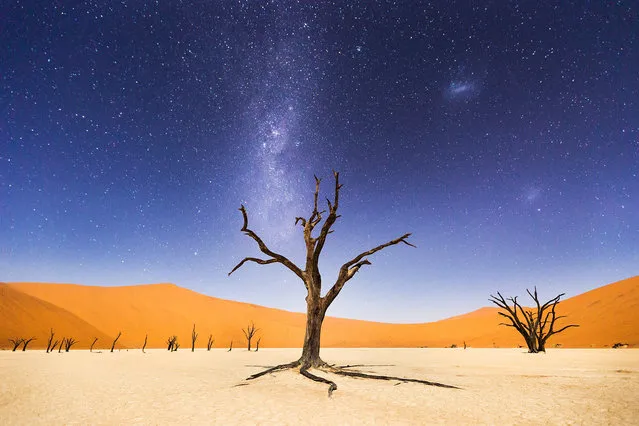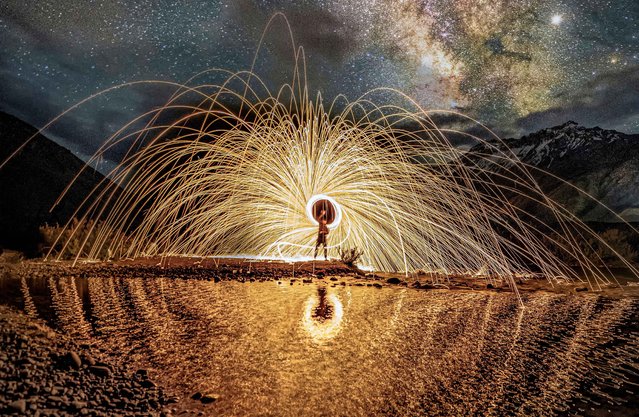
Sparks fly in front of the Milky Way in Himachal Pradesh, India on May 12, 2023. Lit steel wool is spun in front of the stunning cluster of stars and over a pool of water. The scene was pictured in the Himalayas, by using a 30 second exposure to capture the stars and movement of sparks. (Photo by Ganesh Bagal/Solent News/Rex Features/Shutterstock)
26 May 2023 04:14:00,post received
0 comments

